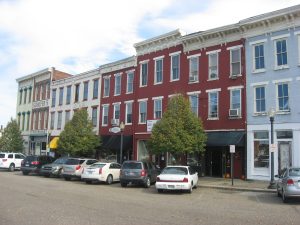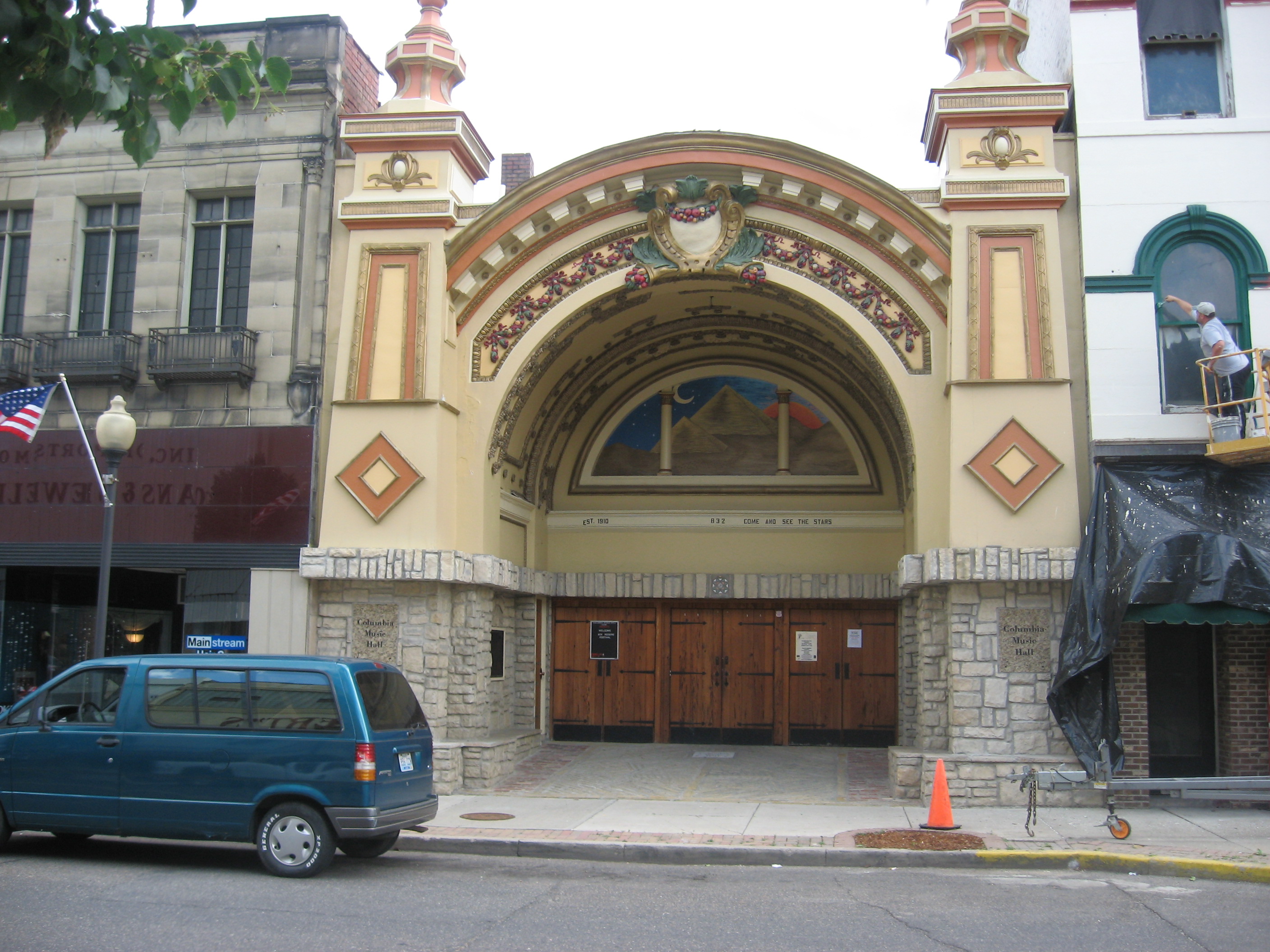About Portsmouth
Here’s a little bit about the city of Portsmouth if you are looking for a Tax Attorney Portsmouth Ohio.
Portsmouth is a city in and the county seat of Scioto County, Ohio, United States. Located in southern Ohio 41 miles (66 km) south of Chillicothe, it lies on the north bank of the Ohio River, across from Kentucky, just east of the mouth of the Scioto River. The population was 20,226 at the 2010 census. Portsmouth also stands as the state’s 88th most populated city.
The area was occupied by Native Americans as early as 100 BC, as indicated by the Portsmouth Earthworks, a ceremonial center built by the Ohio Hopewell culture between 100 and 500 AD.
1847 map showing the location of the Portsmouth Earthworks northeast of Portsmouth.
According to early 20th-century historian Charles Augustus Hanna, a Shawnee village was founded at the site of modern-day Portsmouth in late 1758, following the destruction of Lower Shawneetown by floods.
European-Americans began to settle in the 1790s after the American Revolutionary War, and the small town of Alexandria was founded. Located at the confluence, Alexandria was flooded numerous times by the Ohio and the Scioto rivers.
In 1796, Emanuel Traxler became the first person to permanently occupy land in what would later be known as Portsmouth, after the United States gained its independence.
In 1803, Henry Massie found a better location slightly east and somewhat removed from the flood plains. He began to plot the new city by mapping the streets and distributing the land. Portsmouth was founded in 1803 and was established as a city in 1815. It was designated as the county seat. Settlers left Alexandria, and it soon disappeared. Massie named Portsmouth after the town of Portsmouth in New Hampshire.
The Ohio state legislature passed “Black Laws” in 1804 that restricted movement of free blacks and required persons to carry papers, in an effort to dissuade blacks from settling in the state. These provisions were intermittently enforced by local governments and law enforcement, and sometimes used as an excuse to force African Americans out of settlements. In 1831, Portsmouth drove out African Americans from the city under this pretext. Many settled several miles north in what became known as Huston’s Hollow, along the Scioto River. Its residents, especially Joseph Love and Dan Lucas, provided aid to refugee slaves in the following years and assisted them in moving north.
Although southern Ohio was dominated in number by anti-abolitionist settlers from the South, some whites also worked to improve conditions for blacks and aid refugee slaves. Portsmouth became important in the antebellum years as part of the Underground Railroad. Fugitive slaves from Kentucky and other parts of the South crossed the Ohio River here. Some found their future in Portsmouth; others moved north along the Scioto River to reach Detroit, Michigan, and get further away from slave catchers. Many continued into Canada to secure their freedom. A historical marker near the Grant Bridge commemorates this period of Portsmouth’s history. James Ashley of Portsmouth continued his activism and pursued a political career. After being elected to Congress, he wrote the Thirteenth Amendment, which abolished slavery in 1865 after the American Civil War.
Portsmouth quickly developed an industrial base due to its location at the confluence of the Ohio and Scioto rivers. Early industrial growth included having meat packing and shipping facilities for Thomas Worthington’s Chillicothe farm, located north of Portsmouth on the Scioto River. The city’s growth was stimulated by completion of the Ohio and Erie Canal in the 1820s and 1830s, which provided access to the Great Lakes, opening up northern markets.
But the construction of the Norfolk and Western (N&W) railyards beginning in 1838 and the completion of the Baltimore and Ohio Railroad (B&O) junction at the city in the late 1850s quickly surpassed the canal in stimulating growth. The railroads soon carried more freight than the canal, with the B&O connecting the city to the Baltimore and Washington, DC markets. By the end of the 19th century, Portsmouth became one of the most important industrial cities on the Ohio River between Pittsburgh, Pennsylvania and Cincinnati, Ohio. It became an iron and steel factory town with new companies like the Portsmouth Steel Company.
Portsmouth major employers include Southern Ohio Medical Center, Kings Daughters Medical Center, Shawnee State University, Norfolk Southern Corp.(Railroad), Southern Ohio Correctional Facility and OSCO Industries. In November 2002, the Portsmouth Gaseous Diffusion Plant in nearby Piketon, Ohio was recognized as a Nuclear Historic Landmark by the American Nuclear Society. It had served a military function from 1952 until the mid-1960s, when the mission changed from enriching uranium for nuclear weapons to one focused on producing fuel for commercial nuclear power plants. The Portsmouth Gaseous Diffusion Plant ended enriching operations in 2001 and began to support operational and administrative functions and perform external contract work. The site is currently being cleaned up for future development by Fluor/ B&W.
Graf Brothers Flooring and Lumber, the world’s largest manufacturer of rift and quartered oak products, has two satellite log yards in Portsmouth, with the company’s main office being located across the river in South Shore, Kentucky. Portsmouth is the home of Sole Choice Inc., one of the largest manufacturers of shoelaces in the world.
Many historical buildings in Portsmouth have been demolished because of poor upkeep, other city development, or the completion of new buildings that replaced the landmarks. Landmarks that have been demolished include the old Norfolk & Western rail depot, churches dating back to the early 20th century, houses dating to the 1850s, Grant Middle School, and the old Portsmouth High School and various elementary schools.
Portsmouth has fourteen parks for residents and community use. These include Alexandria Park (Ohio and Scioto River confluence), Bannon Park (near Farley Square), Branch Rickey Park (on Williams Street near levee), Buckeye Park (near Branch Rickey Park), Cyndee Secrest Park (Sciotoville), Dr. Hartlage Park (Rose Street in Sciotoville), Labold Park (near Spartan Stadium), Larry Hisle Park (23rd Street & Thomas Ave.), Mound Park (17th & Hutchins Streets), York Park (riverfront), Spartan Stadium, Tracy Park (Chillicothe & Gay Streets), and Weghorst Park (Fourth & Jefferson Streets).
If you are looking for a tax attorney Portsmouth Ohio, you are at the right spot. Give us a call today at 330-331-7611.









